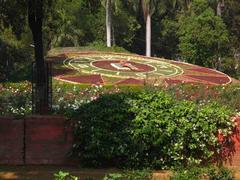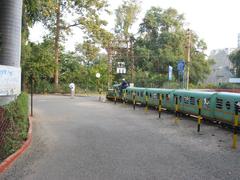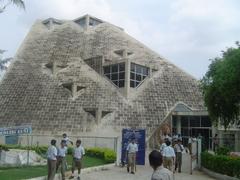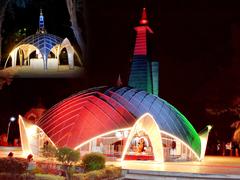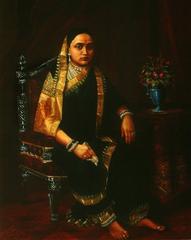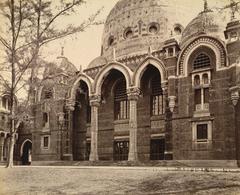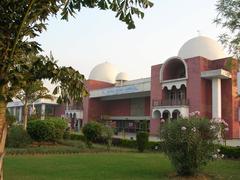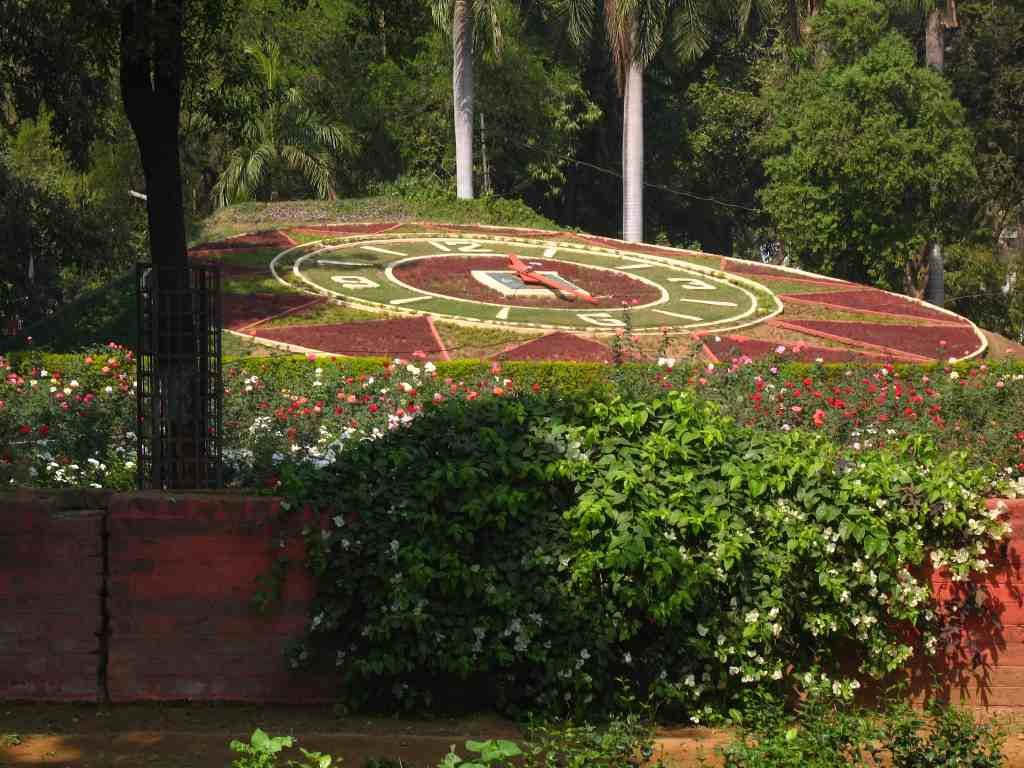
Visiting Sayaji Baug Zoo in Vadodara: Hours, Tickets, and Tips
Date: 17/07/2024
Introduction
Sayaji Baug Zoo, commonly referred to as Kamati Baug, is an integral part of Vadodara’s cultural and natural heritage. Established in 1879 by Maharaja Sayajirao Gaekwad III, the zoo is nestled within the expansive 113-acre Sayaji Baug complex, one of the largest public gardens in Western India. This historic site offers a unique blend of wildlife conservation, botanical beauty, and architectural splendor. Designed by William Goldring of Kew Gardens, London, the zoo’s layout reflects a harmonious fusion of Indian and European landscaping styles, characteristic of the Gaekwad dynasty’s architectural vision (Vadodara Municipal Corporation).
The zoo’s significance extends beyond recreation, playing a vital role in wildlife conservation and education. Housing over 1,000 animals, including endangered species like the Asiatic lion, Sayaji Baug Zoo has been instrumental in various breeding programs and conservation efforts. The zoo’s educational programs and research collaborations further its mission, making it a hub for learning and awareness about wildlife and environmental conservation (Central Zoo Authority).
For visitors, Sayaji Baug Zoo offers a rich tapestry of experiences. From its diverse animal exhibits and the enchanting toy train ride to the educational Sardar Patel Planetarium and the iconic floral clock, the zoo provides a comprehensive and engaging visit for all ages. This guide aims to provide detailed information on the zoo’s history, visitor tips, and nearby attractions, ensuring a well-rounded and memorable visit to this iconic landmark in Vadodara.
Table of Contents
- Introduction
- History and Significance
- Role in Wildlife Conservation
- Educational and Research Contributions
- Visitor Information
- Modern Developments and Future Plans
- Notable Exhibits and Attractions
- FAQ Section
- Conclusion
History and Significance
Establishment and Early Years
Sayaji Baug Zoo was established in 1879 by Maharaja Sayajirao Gaekwad III, a visionary ruler of the erstwhile Baroda State. The zoo was part of a larger initiative to create a public park that would serve as a recreational and educational space for the citizens of Vadodara. The establishment of the zoo was a significant step in promoting wildlife conservation and education during a period when such concepts were still in their infancy in India.
Architectural and Botanical Significance
The Sayaji Baug complex, including the zoo, is spread over 113 acres and is one of the largest public gardens in Western India. The zoo itself is home to a diverse range of flora and fauna, making it a significant site for both botanical and zoological studies. The garden was designed by William Goldring, a noted architect from Kew Gardens, London. The layout of the zoo and the surrounding gardens reflects a blend of Indian and European landscaping styles, which was a hallmark of the Gaekwad dynasty’s architectural endeavors.
Role in Wildlife Conservation
Over the years, Sayaji Baug Zoo has played a crucial role in wildlife conservation. The zoo houses over 1,000 animals, including several endangered species. It has been involved in various breeding programs aimed at conserving species that are at risk of extinction. For instance, the zoo has successfully bred the Asiatic lion, which is native to the nearby Gir Forest. The zoo’s efforts in conservation have been recognized by various national and international wildlife organizations.
Educational and Research Contributions
Sayaji Baug Zoo is not just a place for recreation but also serves as an educational hub. The zoo conducts regular educational programs and workshops aimed at raising awareness about wildlife conservation among school children and the general public. The zoo’s library, which houses a vast collection of books and journals on zoology and botany, is a valuable resource for researchers and students. The zoo also collaborates with various academic institutions for research projects related to wildlife and environmental conservation.
Visitor Information
Visiting Hours and Tickets
Sayaji Baug Zoo is open to visitors from 9:00 AM to 6:00 PM every day. The ticket prices are quite affordable, with adult tickets priced at INR 10 and children’s tickets at INR 5. Special discounts are available for school groups and senior citizens.
Travel Tips and Guidelines
For those planning to visit Sayaji Baug Zoo, it is advisable to allocate at least half a day to explore the zoo and the surrounding gardens thoroughly. The best time to visit is during the cooler months from October to March. Visitors are encouraged to wear comfortable walking shoes and carry water bottles, as the zoo covers a large area. It is also important to follow the zoo’s guidelines, such as not feeding the animals and maintaining cleanliness, to ensure a safe and enjoyable experience for everyone.
Nearby Attractions
While visiting Sayaji Baug Zoo, consider exploring other nearby attractions such as the Baroda Museum and Picture Gallery, the Maharaja Fateh Singh Museum, and the Laxmi Vilas Palace. These sites offer a deeper insight into the rich history and culture of Vadodara.
Modern Developments and Future Plans
In recent years, Sayaji Baug Zoo has undergone several modernization initiatives to enhance the visitor experience and improve the living conditions of the animals. The zoo has introduced new enclosures that mimic the natural habitats of the animals, providing them with a more comfortable and stimulating environment. Plans are also underway to introduce more interactive exhibits and digital information kiosks to educate visitors about the animals and their habitats.
Notable Exhibits and Attractions
Some of the notable exhibits at Sayaji Baug Zoo include the reptile house, which houses a variety of snakes and lizards, and the aviary, which is home to numerous species of birds. The zoo also has a dedicated section for nocturnal animals, allowing visitors to observe the behavior of animals that are active during the night. The zoo’s aquarium, which features a wide range of freshwater and marine species, is another major attraction.
FAQ Section
What are the Sayaji Baug Zoo visiting hours?
The zoo is open daily from 9:00 AM to 6:00 PM.
How much are the Sayaji Baug Zoo tickets?
Adult tickets are priced at INR 10, and children’s tickets are priced at INR 5.
What are some nearby attractions?
Nearby attractions include the Baroda Museum and Picture Gallery, the Maharaja Fateh Singh Museum, and the Laxmi Vilas Palace.
Conclusion
Sayaji Baug Zoo stands as a testament to the vision and foresight of Maharaja Sayajirao Gaekwad III. Its rich history, significant contributions to wildlife conservation, and role as an educational and cultural hub make it a must-visit destination for anyone traveling to Vadodara. The zoo continues to evolve, embracing modern technologies and practices to enhance its offerings and ensure the well-being of its animal inhabitants.
For more information, you can visit the official Vadodara Municipal Corporation website or follow us on social media for more updates.
References
- Vadodara Municipal Corporation https://vmc.gov.in/
- Central Zoo Authority https://cza.nic.in/
- Zoo Outreach Organisation http://www.zooreach.org/
- World Wildlife Fund https://www.worldwildlife.org/
